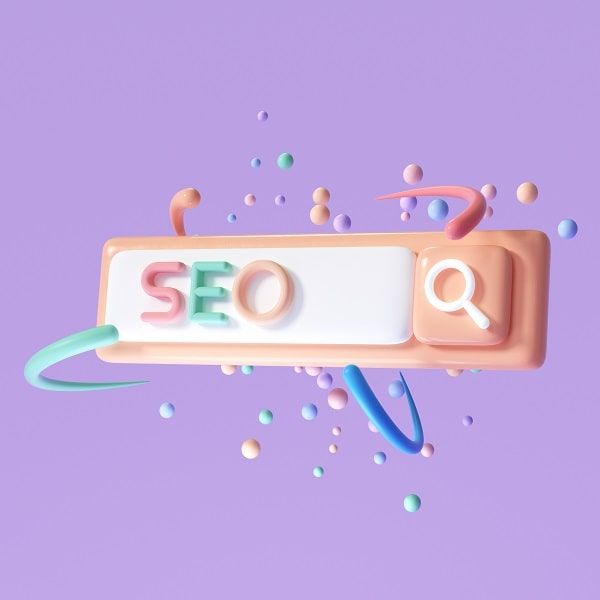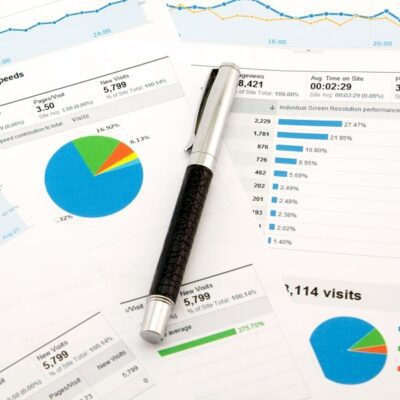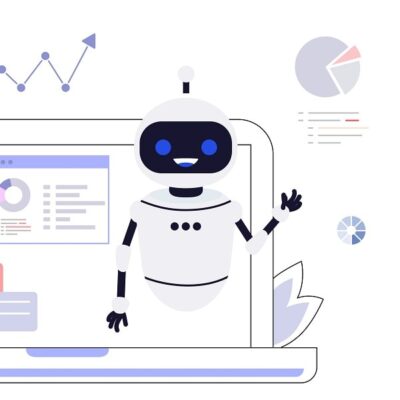Search engine optimization (SEO) has become one the most profitable avenues of marketing for global and small, local businesses. SEO enables you to connect with potential customers better than any other online medium.
So much so that SEO is projected to reach $77.6 billion in value by the end of 2023. We are going to explain what the difference between SEO and SEM is and why you need to be taking advantage of both to help grow your business. Let’s get started!
Table of Contents
- What is SEO and SEM?
- What’s the Difference Between SEO and SEM?
- SEO and SEM: Key Features
- SEO Features
- On-Page SEO
- Off-Page SEO
- Technical SEO
- SEM Features
- Ad Keyword Groups
- Ad Copy
- Quality Score
- Bidding
- SEO Features
- How SEO and SEM Work Together
- SEO and SEM FAQs
- 1. Which is Better: SEO or SEM?
- 2. Is SEO or SEM More Expensive?
- 3. How Long Does it Take to See Results from SEO?
- 4. How Long Does SEM Take to See Progress?
- 5. Which Type of SEM is Best?
- 6. How Much Does SEO Cost?
What is SEO and SEM?
SEO
SEO is the process of improving a website’s quality to increase traffic and conversion rates from a search engine query to a landing page or site overall. It targets organic traffic by increasing the keyword rankings of a website. This means it is unpaid traffic unlike advertising that is directly tied to ad spend.
SEM
Search Engine Marketing (SEM) is a digital marketing strategy that enables businesses to gain more leads and clients on search engines. This type of marketing considers the following:
- How search engines work
- What people search for
- The actual search terms people look for
- Which search engines are preferred by their targeted audience
What’s the Difference Between SEO and SEM?
SEM and SEO may sound exactly alike and it’s because the definition of SEM changes based on who you ask. Most marketers will categorize SEM as an advertising strategy primarily instead of combining it with SEO.
The two share similarities with how they increase a website’s visibility online for more traffic and better lead quality. In this article, we are going to associate SEM with paid advertising.
SEO and SEM: Key Features
SEO Features
Search engines have become so effective at indexing websites through SEO. As a result, searchers rarely click beyond the first few results on the first SERP.
SERP stands for search engine results pages. Optimizing your website for SEO can propel your business from the 50th spot to the first page on Google.
We’ll discuss what the three main components of SEO are and the strategies that fall within each one.
On-Page SEO
On-page SEO is a type of optimization that refers to all activities that are done directly to the website. It also includes any HTML coding that can make the website more visible to search engines like Google. Here are a few examples of on-page SEO elements:
- Keyword Research: This is one of the most important components of on-page SEO. It involves researching and analyzing words used by individuals when searching for your products or services.
- Header Tags: These are used to organize content on a page using HTML elements. This helps search engines understand the structure of a page’s content and helps make sure it ranks with relevant searches.
- Meta Information: Also known as title tags and meta descriptions. These provide an additional layer of clarity for search engines about what each page is about. It also gives users a preview of what they will find if they click through.
- Image Search Optimization: This helps ensure that images placed on a web page are optimized for maximum viewership in image searches. This then gives your website further visibility and exposure.
- Content Optimization for the Primary Keyword: This means ensuring that the focus keyword appears strategically throughout the content . That way it remains relevant to the search engine algorithm.
- Creating Content: Creating new content also helps keep your website current and up-to-date. It does this by expanding your portfolio with new content pieces featuring optimized keywords.
- Internal Linking: This process helps link pages within your website keeping people on the site longer. It also takes people to other valuable pages to improve their experience.
The goal of on-page SEO is to improve the user experience and create a positive impact on web rankings. It helps websites become more visible in search engine results.
Off-Page SEO
Off-page SEO is the process of increasing a website’s authority by obtaining external links from trusted websites. Here are a few examples of off-page SEO elements:
- Building Authority for Link Building: This involves creating external links from trusted websites that direct back to your own site. It also helps improve search engine algorithms’ estimation of your website’s reputation in that particular topic field.
- Consistent NAP (citations): NAP is an acronym that stands for name, address, and phone number. These three pieces of information are very important to provide on any type of website or listing. Creating consistent NAP citations entails making sure each copy of any contact details appears exactly like its versions on other sites. This is beneficial for when search engines are cross-checking them across websites.
- Building Listings: Businesses must be intentional about getting their listings included in appropriate online directories and profiles. Try to be proactive by being added to the appropriate listings within your area or industry.
The primary goal of off-page SEO is to build relationships, gain links, and rank on the first page of Google.
Technical SEO
Technical SEO is the practice of improving search engine visibility through optimizing website architecture. This includes tasks such as structuring data, creating error checks, configuring XML sitemaps, and more. It helps websites become easier to crawl and index. This results in higher positions for organic search results, more organic traffic, and increased online visibility.
- Website Speed: This refers to how quickly your website can be accessed, loaded, and interacted with.
- Website Architecture: This ensures that pages can be linked together properly and will enhance a user’s experience.
- Navigation: This involves the hierarchy of menus and pages on the website. It should be easy for users to find what they are looking for without confusion or frustration.
- User Experience: This encompasses how users interact with the site. It covers areas like design, visual flow, and functionality of various functions on the site.
- Site Audit: This is a process of identifying additional issues that could affect SEO performance. Issues such as 404 errors or 5xx status codes which indicate broken links or other technical problems.
All these factors work together to ensure proper technical SEO implementation.
SEM Features
As more businesses move to online platforms, potential customers must be able to find them on search engines. SEM provides visibility by driving traffic to your website. It also helps you target the right audiences and promote brand awareness.
We’ll dive into the main features to explain what the difference is between SEO and SEM.
Ad Keyword Groups
Search engine marketing (SEM) and paid advertising both rely on targeting keywords, but the nuances between these two strategies vary. SEO does not factor in a budget like SEM does. When utilizing advertising for optimization strategies, advertisers need to focus on CPC over keyword difficulty level. This is since it is the cost per click per keyword that you ultimately account for when setting your budget.
Furthermore, things such as ad placements and specific audience targeting are also features exclusive to SEM campaigns. This makes them a reliable tool in relation to cost and program effectiveness.
By choosing hosting platforms, like Google Ads or Microsoft Advertising, businesses have access to industry leading tools and features. These are designed specifically with digital marketers and advertisers in mind.
Ad Copy
An ad typically consists of two headlines that measure 25-30 characters each, and one description line that measures 35-40 characters. Ad copy can be equipped with industry keywords to show up in search results more frequently. It also helps searchers decide which ads are most relevant for their needs.
These keywords should be placed both in the headlines and description lines to target audiences most efficiently.
For example, if someone is searching “best laptop” online, an effective ad might include the following keywords in the ad copy:
- Best laptop
- Laptop reviews
- Affordable laptop
By using these elements into pay-per-click (PPC) ads, businesses can ensure they reach their desired customers with no trouble.
Quality Score
Quality score is a metric advertisers use to determine the quality of their ads. It gives helpful feedback on how an advertised event or topic is resonating with its audience. It also resonates how successful it will be in gaining new customers.
By increasing the quality score, businesses can optimize their SEM campaigns to increase the effectiveness of their ads. As a result, they experience better ad placement and lower cost per click while experiencing higher ROI within their campaigns.
This can be accomplished by analyzing customer behaviors through website traffic, customer reviews and feedback, or content engagement such as newsletters. All of these tactics can help maximize the potential of SEM strategies and achieve improved quality scores along the way.
Bidding
When it comes to SEM, bidding is one of the most popular features available. This essentially means that businesses can bid on specific keywords in order to feature their ad higher in search engine results.
Not all bids are created equal, with certain keywords being more expensive than others due to competition. By bidding on certain keywords, companies get increased visibility on popular search engines. They also get better placements which would cost much more through traditional advertising mediums.
With bidding through SEM, businesses are able to customize their approach in a manner that works best for them. As well as develop an effective way of reaching their target markets and generating leads.
How SEO and SEM Work Together
SEO and SEM are highly effective digital marketing techniques that drive more traffic to websites by improving search engine placement. They both work hand-in-hand to optimize a website for the search engines. SEO helps structure content on a page, while SEM provides targeted paid ad campaigns to draw users in.
SEO concentrates on organic search options, enabling businesses to rank higher than their competitors without any additional costs. Meanwhile, SEM focuses on paying for ads and link building campaigns in order to reach the top of SERPs. By combining SEO and SEM strategies, web owners can ensure that they reach their desired audience with greater success and visibility.
SEO and SEM FAQs
1. Which is Better: SEO or SEM?
This answer highly depends on your business preferences, needs, and the type of results you’re looking to achieve. Here are a few examples of the types of differences you can see between SEO and SEM:

Hopefully these factors can help your business decide which strategy is most beneficial to use.
2. Is SEO or SEM More Expensive?
When comparing the two, SEO is the cheaper option to invest in. While SEO is longer lasting and tends to bring in a higher ROI, it can also take more time to see desired results. SEM marketing is a quicker option in achieving results faster. However, it can be more costly for businesses to invest in SEM than SEO.
3. How Long Does it Take to See Results from SEO?
There is no definitive answer as to how long it takes to see SEO results. Every campaign can be different in their own timeframe and way. Typically, most campaigns will start to see progress within the first 6 months of utilizing SEO.
However, to start truly seeing progress, you must regularly optimize SEO and search campaigns. Especially within the first 6 months. The first 6 months involve implementing research and planning, technical SEO, building content, link building, and more.
4. How Long Does SEM Take to See Progress?
It can be possible to see results within the first week of launching a campaign. However, it is usually more effective if the campaign is sustained for one to three months. This is to ensure continued progress and allow for tweaks and optimizations as necessary.
Additionally, ongoing maintenance is essential for long-term success as competition among online advertisers steadily increases. Therefore, successful integration of SEM into a marketing strategy typically takes months if not longer in order to yield results.
5. Which Type of SEM is Best?
Search engine marketing (SEM) is a powerful tool when it comes to improving your online presence and driving website traffic. There are multiple types of SEM techniques to pursue as well.
A good starting point is to assess the key objectives of your campaign. From there, research what type of SEM platform will most effectively help you achieve those goals. Generally, Google Ads or paid search campaigns are the quickest way to start driving traffic.
Consider a cost-per-click (CPC) campaign. This involves bidding on keywords related to your products and services.
6. How Much Does SEO Cost?
The cost of SEO services can vary depending on the company, their experience, and scope of services included in your package. A small business may end up paying a few hundred dollars each month for basic SEO support. This can include items like keyword research and content optimization.
On the other hand, some larger companies spend tens of thousands of dollars per month for comprehensive services. Such as website development, link building campaigns, local SEO strategies, content marketing campaigns, competitor research, and more.
There are a variety of SEO reseller plans that could be important to consider as an agency looking to scale SEO. Ultimately, SEO prices all depend on your individual business or agency needs and budget.
Get Started on Your SEO and SEM with Manta
SEO may sound like an intimidating marketing term, but it’s really not that scary. Like any sustainable marketing strategy, SEO requires time, effort, and monitoring. It also demands frequent tweaking, as search engines are constantly updating their algorithms to provide users with the best possible experiences.
Boostability has been a leader in white label SEO services for over a decade with partners located worldwide. We work as an extension of our partners teams to get their clients ranking in the top ten results on Google. It’s important to us that their clients get found by the right type of customers for their businesses! Learn more about our white label SEO partnership program! Get in touch with a Partner Success Team member for more details.










